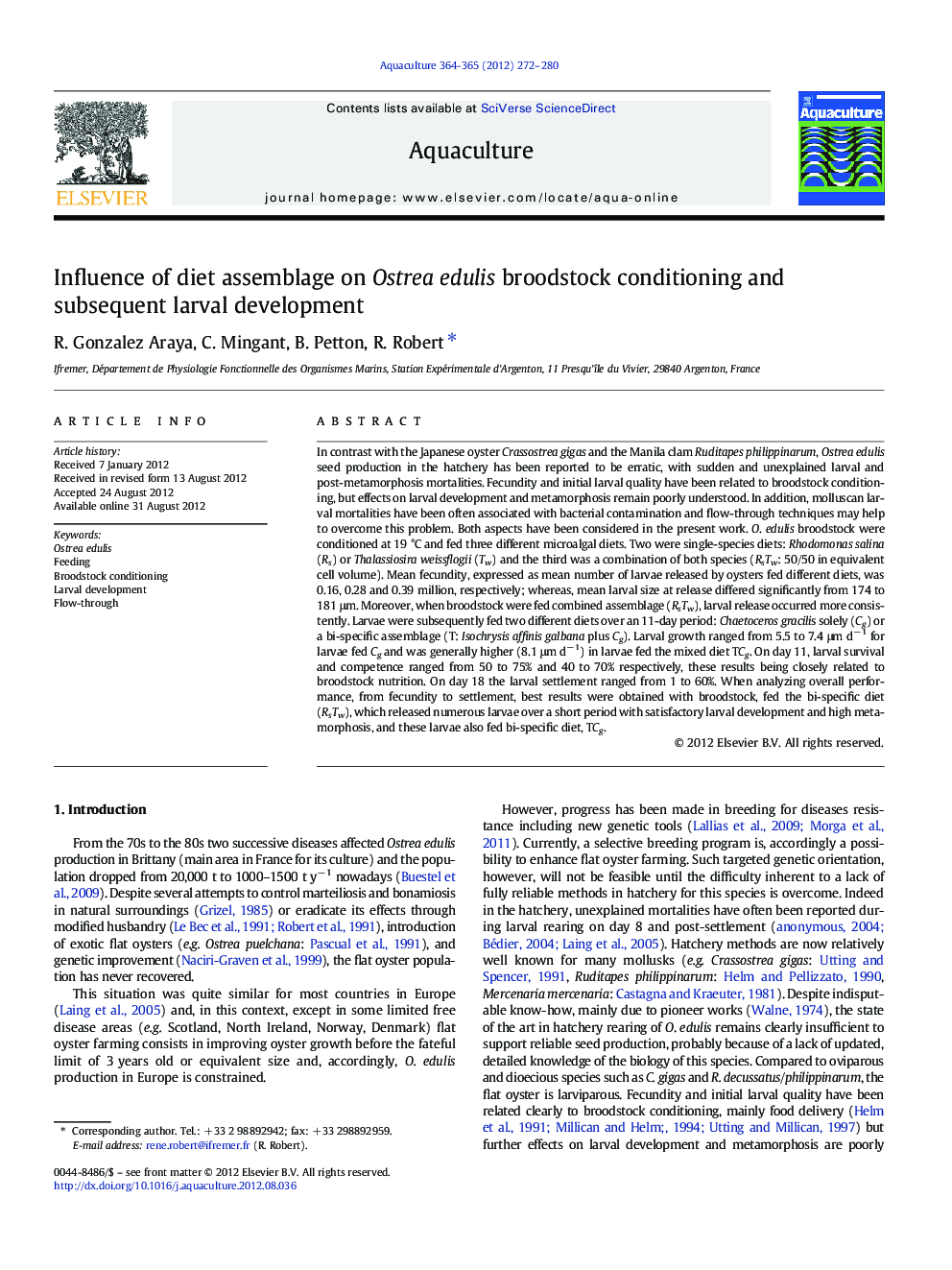| کد مقاله | کد نشریه | سال انتشار | مقاله انگلیسی | نسخه تمام متن |
|---|---|---|---|---|
| 2422383 | 1552884 | 2012 | 9 صفحه PDF | دانلود رایگان |

In contrast with the Japanese oyster Crassostrea gigas and the Manila clam Ruditapes philippinarum, Ostrea edulis seed production in the hatchery has been reported to be erratic, with sudden and unexplained larval and post-metamorphosis mortalities. Fecundity and initial larval quality have been related to broodstock conditioning, but effects on larval development and metamorphosis remain poorly understood. In addition, molluscan larval mortalities have been often associated with bacterial contamination and flow-through techniques may help to overcome this problem. Both aspects have been considered in the present work. O. edulis broodstock were conditioned at 19 °C and fed three different microalgal diets. Two were single-species diets: Rhodomonas salina (Rs) or Thalassiosira weissflogii (Tw) and the third was a combination of both species (RsTw: 50/50 in equivalent cell volume). Mean fecundity, expressed as mean number of larvae released by oysters fed different diets, was 0.16, 0.28 and 0.39 million, respectively; whereas, mean larval size at release differed significantly from 174 to 181 μm. Moreover, when broodstock were fed combined assemblage (RsTw), larval release occurred more consistently. Larvae were subsequently fed two different diets over an 11-day period: Chaetoceros gracilis solely (Cg) or a bi-specific assemblage (T: Isochrysis affinis galbana plus Cg). Larval growth ranged from 5.5 to 7.4 μm d− 1 for larvae fed Cg and was generally higher (8.1 μm d− 1) in larvae fed the mixed diet TCg. On day 11, larval survival and competence ranged from 50 to 75% and 40 to 70% respectively, these results being closely related to broodstock nutrition. On day 18 the larval settlement ranged from 1 to 60%. When analyzing overall performance, from fecundity to settlement, best results were obtained with broodstock, fed the bi-specific diet (RsTw), which released numerous larvae over a short period with satisfactory larval development and high metamorphosis, and these larvae also fed bi-specific diet, TCg.
► We study the role of three microalgal diets on flat oyster broodstock conditioning.
► The influence of three other different diets is determined on larval development.
► RsTw leads to the highest O. edulis fecundity
► TCg leads to the highest O. edulis settlement.
► Best overall performances are obtained with mixed diets from broodstock to larvae.
Journal: Aquaculture - Volumes 364–365, 5 October 2012, Pages 272–280